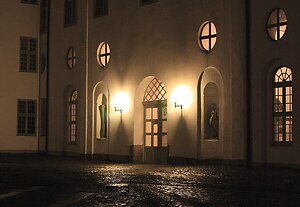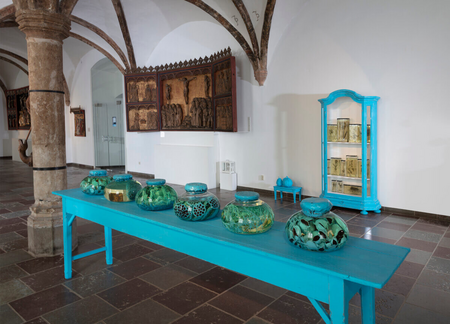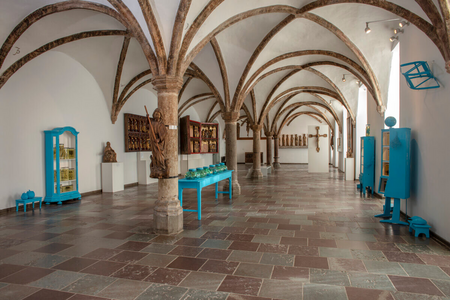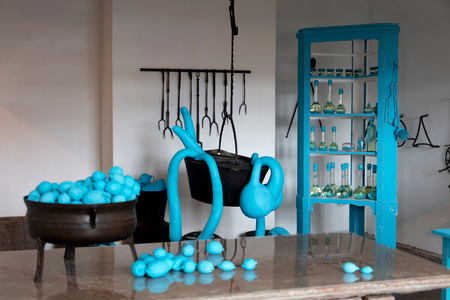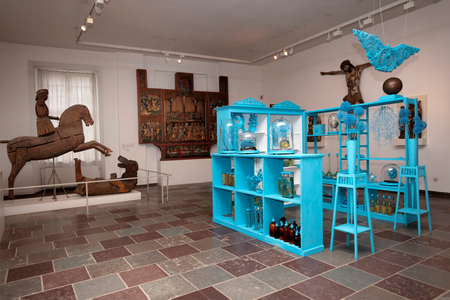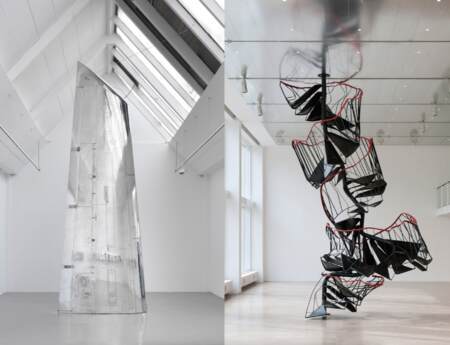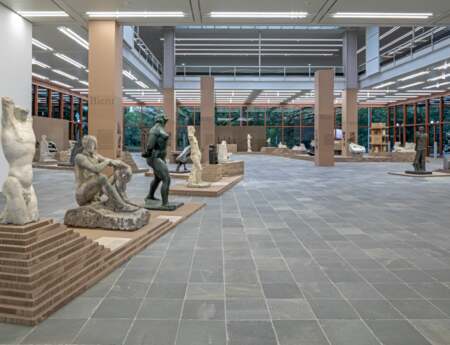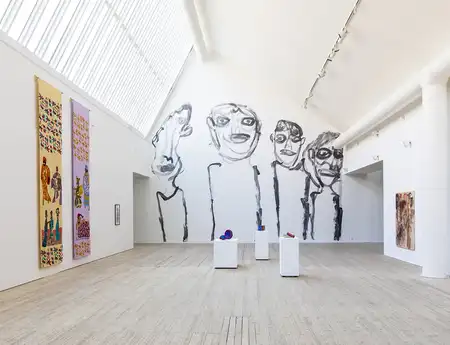Anja Schindler: Mirror of the World
For one season, the artist Anja Schindler (* 1963 in Bremen) enriches the historical tour of Gottorf Castle with 20 installations. After several years of preparatory work and numerous visits to the site, she has developed her artworks in dialogue with the history of this castle, its collections, and its garden. The result is a highly captivating journey from today to the heyday of the Baroque Gottorf court.
From the mid-17th to the early 18th century, the residence of the dukes and duchesses of Schleswig-Holstein-Gottorf was a center of knowledge, fine arts, music, and garden art renowned throughout Europe. In particular, the precious library, the rich art and curiosity cabinet, the terraced garden with its legendary plant collection, and the walkable giant globe attracted admirers. With Anja Schindler, a contemporary artist has now dared to trace the treasures and curiosities once collected here and lost after 1720: She aims to translate the atmosphere of that time into her own contemporary visual language. To this end, she interprets Baroque ideas in the form of artistic interventions at the original locations.
Once, the aim of the art and curiosity cabinets was to bring the whole world into one room, to explore and understand it. The assembled objects reflected the (then known) cosmos. Now, through Anja Schindler’s works, a new “Mirror of the World” is being created. Past, present, and future engage in a dialogue. Our visitors are invited to embark on a journey of discovery along the brightly blue-lit art installations spanning two floors, to marvel and admire.
Anja Schindler’s Gottorf works are characterized by the recurring theme of her engagement with plants and their remnants. In the 17th century, the garden located north of the castle, the now reconstructed Baroque garden, enjoyed great fame. In the midst of the Thirty Years’ War, Duke Friedrich III commissioned his court gardener Johannes Clodius with this facility from 1637, which his successor Duke Christian Albrecht expanded splendidly by four terraces from 1660 onwards. The garden was particularly special because of the botanical rarities collected here. It formed the lively counterpart to the Duke’s art and curiosity cabinet. Both arose from the pronounced scientific interests of Friedrich III and Christian Albrecht as well as from Baroque collecting passion. Anja Schindler was inspired by the species once planted there and brought them into the castle in dried and blue-transformed form: Some of the precious faience vases and flower plug boxes of the 18th century from the museum collection thus temporarily regain their historical function and at the same time transform into contemporary sculptures.
Anja Schindler is fascinated by the rich history of the former Gottorf residence, one of the cultural centers of Northern Europe in the 17th century. With her installations, she bridges the gap between the Baroque era and today, reminding us of this court where emphasis was placed not on war, but on arts and sciences.
See here for further information.
